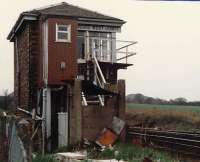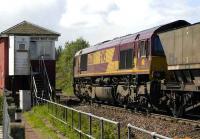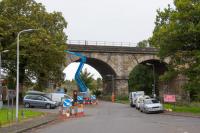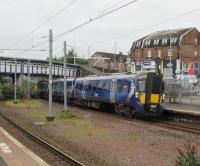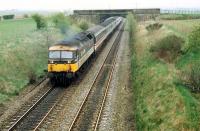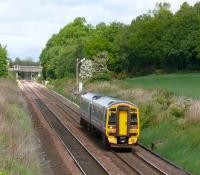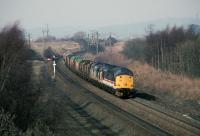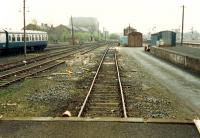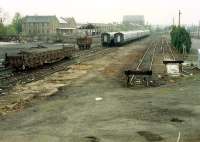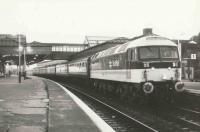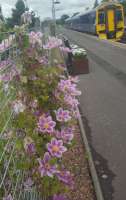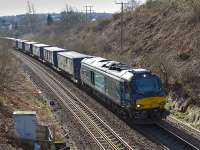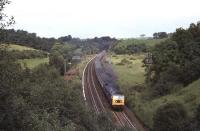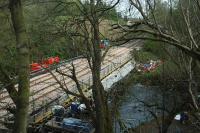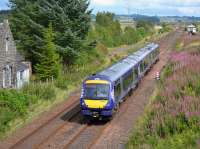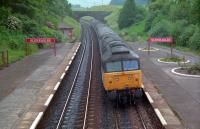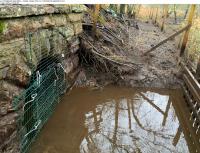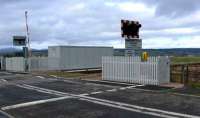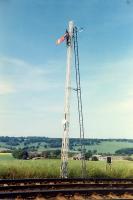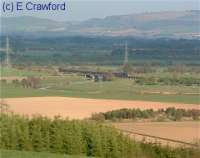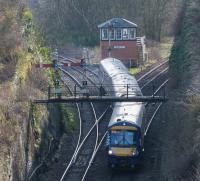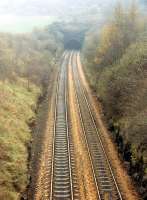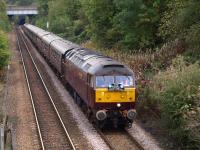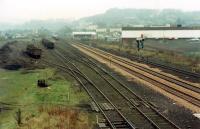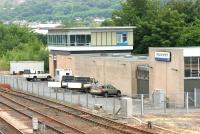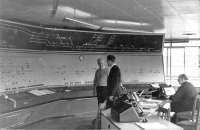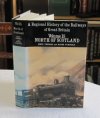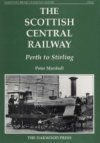Scottish Central Railway
Introduction
This railway is still open. The company provided a service between Perth and Greenhill (near Falkirk). Services ran from Carlisle, Glasgow Central and Edinburgh Princes Street to Greenhill and continued to Perth. Perth was, and still is, the junction for Aberdeen and Inverness. The main line to Aberdeen through Strathmore is now closed but the route via Dundee remains open. The line between Stirling and Perth is supported and promoted by the Strathallan Community Rail Partnership.
Dates
| / /1840 | Dunmore Quarry, Polmaise Quarry, Plean Quarry, Bannockburn Quarry Opened after the Scottish Central Railway and Edinburgh and Glasgow Railway opened. |
| / /1845 | Scottish Central Railway Act receives Royal assent. |
| / /1845 | Scottish Midland Junction Railway Act receives Royal assent. Line to connect with the Scottish Central Railway in Perth and the Arbroath and Forfar Railway in Forfar. |
| / /1845 | Scottish Central Railway The company is bound to provide a footbridge at the Shore Road Level Crossing [CR] by Stirling station for use when the roadway is blocked. |
| / /1846 | Scottish Central Railway Perth General station and Perth Harbour branch approved. Junction with Scottish Midland Junction Railway approved. |
| / /1846 | Scottish Central Railway
Scottish Midland Junction Railway
Dundee and Perth Railway
Edinburgh and Northern Railway Agreement and authorisation that Perth General station be owned by Scottish Central Railway, Scottish Midland Junction Railway, Dundee and Perth Railway and Edinburgh and Northern Railway jointly. |
| / /1846 | Scottish Central Railway Company authorised to extend to and build what would become the joint passenger station Perth General. |
| / /1847 | Dundee and Perth Railway Further Act authorising change of alignment at Perth. The line will now meet the Scottish Central Railway south of Perth station at Dundee and Perth Junction (St Leonards Bridge Junction). Trains from Dundee will reverse into Perth station. |
| 03/02/1847 | Scottish Central Railway
Edinburgh and Northern Railway Agreement for use of the Scottish Central Railway between Hilton Junction and Perth General by the Edinburgh and Northern Railway. |
| 30/12/1847 | Scottish Central Railway Moncrieffe Tunnel completed. |
| /03/1848 | Scottish Central Railway Stirling Shed [CR] opened, the original being a timber shed possibly left over from the contractors. |
| 01/03/1848 | Scottish Central Railway Opened from Scottish Central Junction (Greenhill) to Stirling. Stations at Scottish Central Junction, Larbert, Bannockburn and Stirling. |
| 22/05/1848 | Scottish Central Railway Opened from Stirling to Perth. Stations at: Bridge of Allan [1st], Dunblane, Kinbuck, Greenloaning, Auchterarder, Dunning, Forteviot, Forgandenny, Perth General. |
| 07/08/1848 | Caledonian Railway Castlecary Branch (Caledonian Railway) opened from Gartsherrie North Junction to Greenhill Lower Junction to meet the Scottish Central Railway. Short connection from Gartsherrie South Junction to Gartsherrie NB Junction opened. (The route included running power over a short section of the Monkland and Kirkintilloch Railway between Gartsherrie NB Junction and Gartsherrie North Junction.) |
| / /1849 | Stirling and Dunfermline Railway Junction with the Scottish Central Railway authorised north of the River Forth. |
| /05/1849 | Dundee and Perth Railway After this date the line was extended from Perth Princes Street to Dundee and Perth Junction south of Perth General on the Scottish Central Railway which was reached by reversal. |
| / /1850 | Scottish Central Railway New locomotive shed, Stirling Shed [CR], opened; stone built four road shed replacing timber shed. The shed was originally single ended with the tracks running to the north. The shed was used for freight locomotives and, later, the Callander and Oban Railway. |
| / /1851 | Scottish Central Railway Blackford station opened. |
| / /1851 | Scottish Central Railway Agreement for layout and maintenance of Hilton Junction where the Edinburgh, Perth and Dundee Railway meets the line. |
| / /1851 | Scottish Central Railway Authorisation to proceed with Perth Harbour branch. |
| / /1852 | Scottish Central Railway Perth Harbour branch opened to goods. |
| 01/07/1852 | Stirling and Dunfermline Railway Opened from Alloa to Stirling. Stirling Forth Viaduct [SandD] at Stirling opened alongside the Scottish Central Railway's bridge, to run south to Stirling East station. |
| 13/04/1853 | Scottish Central Railway
Forth and Clyde Junction Railway Agreement made for the use of Stirling station. |
| 12/09/1853 | Scottish Central Railway
Edinburgh and Glasgow Railway
Stirling and Dunfermline Railway Operating agreement for the use of Stirling station made by Scottish Central Railway, Edinburgh and Glasgow Railway and Stirling and Dunfermline Railway. |
| 26/05/1856 | Forth and Clyde Junction Railway Opened for passengers. Line operated by the Scottish Central Railway. |
| / /1859 | Scottish Central Railway
Scottish Midland Junction Railway
Dundee and Perth Railway
Edinburgh and Northern Railway Limits of Perth General station defined by the joint committee, repealing the agreement of 1846. The Scottish North Eastern Railway is authorised to use Perth General and to form a siding on the east side of the station. |
| / /1859 | Scottish Central Railway Consolidation and Amendment Act passed. (Acts of 1845, 1846 (South Alloa), 1851 and 1853 repealed.) |
| / /1859 | Scottish Central Railway
Forth and Clyde Junction Railway With the Scottish Central Railway having Consolidated, the Forth and Clyde Junction Railway is re-authorised to access Stirling station. |
| / /1860 | Forth and Clyde Junction Railway The Scottish Central Railway ceases to operate the line when the F&CJR itself takes over operation. |
| / /1860 | Caledonian Railway
Edinburgh and Glasgow Railway
Scottish Central Railway A Bill is presented to merge the Caledonian Railway, Edinburgh and Glasgow Railway and Scottish Central Railway. It is rejected. |
| / /1860 | Scottish Central Railway
Scottish Midland Junction Railway
Dundee and Perth Railway
Edinburgh and Northern Railway Rights of access to Perth General of the companies agreed . |
| / /1861 | Scottish Central Railway Authorisation for sidings at St Leonards Bridge. |
| / /1862 | Scottish North Eastern Railway
Scottish Central Railway Confirmation of agreements regarding Perth General between the Scottish North Eastern Railway and Scottish Central Railway. |
| / /1863 | Scottish Central Railway
Dundee, Perth and Aberdeen Junction Railway
Dundee and Newtyle Railway The Scottish Central Railway absorbs the Dundee, Perth and Aberdeen Junction Railway and its lease of the Dundee and Newtyle Railway. The North British Railway is granted running powers over both the Dundee and Perth Railway and Dundee and Newtyle Railway routes. |
| / /1864 | Caledonian Railway
Edinburgh and Glasgow Railway
Scottish Central Railway Proposed Act for the merger of the Caledonian Railway, Edinburgh and Glasgow Railway and Scottish Central Railway is rejected. |
| / /1864 | Scottish Central Railway Authorisation to stop up the level crossings north and south of Dunblane station and replace them with road overline bridges. Additionally permission is granted to extend the Callander [1st] line from the junction (north) into the station (south) over the site of the northern level crossing. (Similar removal of level crossings in Stirling at a later date.) |
| / /1864 | Scottish Central Railway Authorisation to stop up Greenyards Level Crossing by Bannockburn. (Not done.) |
| / /1864 | Scottish Central Railway Agreement between Scottish Central Railway and North British Railway over the toll for the line between Hilton Junction and Perth General and use allowed of Perth General. |
| / /1865 | Crieff Junction Railway
Scottish Central Railway Crieff Junction Railway absorbed by Scottish Central Railway. |
| / /1865 | Scottish Central Railway
Caledonian Railway Scottish Central Railway absorbed by Caledonian Railway. Running powers for the North British Railway, London and North Western Railway, Midland Railway and Glasgow and South Western Railway were preserved. |
| / /1865 | Dunblane, Doune and Callander RailwayScottish Central Railway Dunblane, Doune and Callander Railway absorbed by Scottish Central Railway. |
| / /1865 | Forth and Clyde Junction Railway Following the merger of the Scottish Central Railway into the Caledonian Railway the F&CJR agrees access with the Caledonian Railway to Stirling station. |
| 01/08/1865 | Edinburgh and Glasgow RailwayNorth British Railway Edinburgh and Glasgow Railway absorbed by North British Railway. (The Scottish Central Railway and Caledonian Railway are granted running powers over the former Edinburgh and Glasgow Railway main line.) |
| / /1866 | Highland Railway
Scottish Central Railway Highland Railway granted access to Perth Harbour over the former Scottish Central Railway. |
| 10/11/1868 | Scottish Central Railway Decision taken to move the locomotive shed at Dunblane Shed to Dolphinton [CR] on the Dolphinton Branch (Caledonian Railway). The Kinbuck banking engine and Callander [1st] engines operated from Stirling after 1865. |
| / /1870 | Scottish Central Railway The North British Railway begins running Glasgow to Perth General services over the former Scottish Central Railway. |
| / /1876 | Scottish Central Railway Authorisation to relocate Muirhall Road, Larbert, further east to allow expansion and partial relocation of the station and quadrupling of a portion of the line. |
| / /1878 | Scottish Central Railway Craigs Crossing, south of Stirling station (and Stirling Middle Junction), is authorised to be stopped up with the road lifted onto a road bridge. |
| / /1882 | Scottish Central Railway Authorisation to buy land to expand Dunblane station. |
| / /1887 | Scottish Central Railway Ashfield Tunnel (Mill of Ash Tunnel) authorised to be opened out. |
| / /1889 | Scottish Central Railway Authorisation to widen the line through Larbert and rebuild the station granted. |
| / /1889 | Scottish Central Railway
Stirling and Dunfermline Railway Shore Road Level Crossing [CR] authorised to be replaced by road bridges and level crossing stopped up (short length of Shore Road survives on east side). Authorisation to expand Stirling station. |
| / /1889 | Scottish Central Railway Agreement between Caledonian Railway and North British Railway to expand Stirling station. |
| / /1891 | Scottish Central Railway Stirling and Dunfermline Railway Shore Road and Shore Road Level Crossing [CR] replaced by new road carried on bridges over line. Level crossing stopped up. |
| / /1892 | Scottish Central Railway New Larbert station opened. |
| / /1896 | Scottish Central Railway Stirling Shed [CR] re-built as a two ended shed after removal of a road to the south of the site. A 50ft turntable was opened by the truncated road at the south east of the site. |
| / /1897 | Caledonian Railway
Scottish Central Railway Widening of the railway at Greenhill authorised. |
| / /1899 | Scottish Central Railway
Stirling and Dunfermline Railway
Forth and Clyde Junction Railway Stirling remodelling - deviation of the Stirling and Dunfermline Railway (now owned by North British Railway) and Forth and Clyde Junction Railway authorised. The new deviation to be vested in the respective companies |
| / /1903 | Scottish Central Railway Authorised to purchase land to the west of Stirling station. |
| / /1903 | Scottish Central Railway Permission to acquire further land for Carsebreck, the curling club halt. |
| 01/03/1904 | Scottish Central Railway Plean station opens with the opening of Plean Colliery No 4 and its coke ovens. |
| /10/1905 | Scottish Central Railway Platforms authorised. |
| / /1907 | Scottish Central Railway Authorisation to acquire further land for Stirling station enlargement and lengthening of the Shore Road bridge. New engine sheds authorised. |
| / /1909 | Scottish Central Railway Coaling stage opened at Stirling Shed [CR]. |
| / /1913 | Scottish Central Railway Stirling station re-built by the Caledonian Railway. |
| 01/01/1915 | Scottish Central Railway Enlarged and rebuilt Stirling station opened. |
| 15/05/1919 | Scottish Central Railway Caledonian Railway agrees to sell water supply to the Bridge of Allan council. |
| 28/03/1920 | Scottish Central Railway
Crieff Junction Railway Authorisation for a deviation of the Crieff Junction Railway at Gleneagles and reconstruction of the station. |
| / /1935 | Scottish Central Railway Stirling Shed [CR] coded 29B from Perth South Shed. |
| / /1940 | Scottish Central Railway Stirling Shed [CR] coded 31B from Balornock Shed. |
| / /1947 | Scottish Central Railway Stirling Shed [CR] re-building begins as entrance arches need replacement. |
| / /1948 | Scottish Central Railway Stirling Shed [CR] coded 63B from Perth South Shed. |
| / /1950 | Scottish Central Railway Stirling Shed [CR] renamed Stirling South Shed. |
| / /1951 | Scottish Central Railway New Stirling South Shed round-house is set-out with a turntable from Polmadie Shed, however the work is abandoned and demolished. |
| 10/01/1951 | Scottish Central Railway Following storm damage to signalling at Alloa Junction there is a collision resulting in 2 deaths. |
| / /1956 | Scottish Central Railway Plean station closed. |
| /04/1960 | Scottish Central Railway Stirling South Shed coded 65J as a sub-shed from Eastfield Shed. |
| / /1962 | Aberdeen Joint (Caledonian Railway)
Aberdeen Railway
Arbroath and Forfar Railway
Scottish Midland Junction Railway
Scottish Central Railway
Caledonian Railway
Garnkirk and Glasgow Railway
Buchanan Street Extension (Caledonian Railway) A4 Pacifics introduced on the Aberdeen to Glasgow Buchanan Street 3 hour Grampian run. |
| 13/06/1966 | Scottish Central Railway Stirling South Shed closed to steam. Shortly afterwards the allocation is transferred to Grangemouth Shed and the shed closed. |
| 03/09/1966 | Aberdeen Joint (Caledonian Railway)
Aberdeen Railway
Arbroath and Forfar Railway
Scottish Midland Junction Railway
Scottish Central Railway
Caledonian Railway
Garnkirk and Glasgow Railway
Buchanan Street Extension (Caledonian Railway) A4 Pacifics from Aberdeen to Glasgow Buchanan Street withdrawn. |
| / /1968 | Scottish Central Railway Perth Harbour branch closed. |
| 13/05/1985 | Scottish Central Railway Bridge of Allan station re-opened on a new site to the immediate south of the old station, Bridge of Allan [1st]. The station included a large car park. |
| /03/2000 | Scottish Central Railway The out of use Polmaise signal box at the former Polmaise Junction is demolished. |
| 09/11/2002 | Scottish Central Railway Landslip at Carmuirs Tunnel. Both bores partly collapse. |
| 30/12/2003 | Scottish Central Railway Car struck by GNER train at Forteviot level crossing. |
| 14/01/2004 | Scottish Central Railway 158717 derails alongside the signal box at Dunblane during an empty stock move. |
| /12/2005 | Scottish Central Railway Possibility of reopening of Blackford to provide relief to Dunblane station discussed by Perth and Kinross Council and First ScotRail. |
| /12/2007 | Scottish Central Railway Introduction of coloured light signalling at Stirling resulting in a mixture with semaphore signalling still in use on the Alloa route. |
| / /2008 | Scottish Central Railway Forthside footbridge erected over the railway by Stirling station. |
| 04/01/2008 | Scottish Central Railway DRS 37515, travelling light engine from Grangemouth to Inverness for snow clearance work, is damaged after hitting a potatoes carrying lorry stuck in ice and snow on Whitemoss Level Crossing. |
| /04/2010 | Scottish Central Railway Petition to the Scottish Parliament to re-open Blackford station to reduce A9 traffic and for the 2014 Ryder Cup at Gleneagles. |
| /02/2011 | Scottish Central Railway With the withdrawal of a Freight Facilities Grant, Highland spring abandons plan for a depot at Blackford. |
| /11/2011 | Scottish Central Railway Local opposition to building a train maintenance depot at Polmaise (planned to have a 2016 opening). |
| 20/07/2022 | Scottish Central Railway First freight train to the Highland Spring crane served sidings, Blackford. |
Locations along the line
These locations are along the line.
At this junction trains from Glasgow to Edinburgh divide from those from Glasgow to Stirling and Perth. It is the junction between the former Edinburgh and Glasgow Railway of 1842 and the Scottish Central Railway of 1848. Both lines are double track.
...
See also
Edinburgh and Glasgow Railway
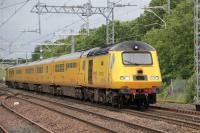
Douglas McPherson 22/06/2020
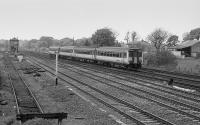
...
Bill Roberton //1990
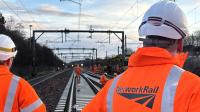
Network Rail /12/2023
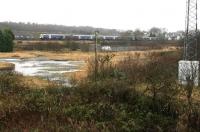
John Furnevel 02/01/2013
...
More details...
More detailsThis was the Caledonian Railway's plant producing creosote treated sleepers, opened 1876. It was located on the short link between Greenhill Upper Junction and Greenhill Lower Junction built by the Scottish Central Railway.
...
Here the Caledonian Railway's Greenhill Branch line from Garnqueen South Junction to Greenhill Lower Junction met the Scottish Central Railway from Greenhill Upper Junction to Perth. Both lines remain open today.
...
See also
Caledonian Railway
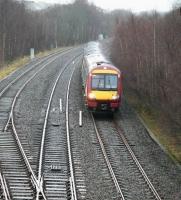
John Furnevel 02/01/2013
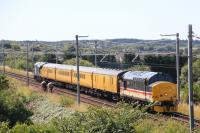
Douglas McPherson 08/08/2020
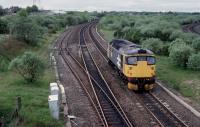
Roger Geach 16/05/1991
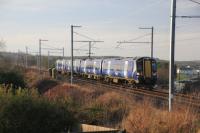
...
Douglas McPherson 19/12/2018
This goods yard was on the north side of the line and approached by reversal. It was a little east of Greenhill Lower Junction. The Bonnymuir Iron Works was immediately to the west of the buffers over Broomhill Road.
...
...
More detailsThis junction was for the Rough Castle Branch (Caledonian Railway). The junction was on the west side of the Forth and Clyde Canal from Carmuirs West Junction.
...
See also
Rough Castle Branch (Caledonian Railway)
The Glasgow-Stirling line passes under the Forth and Clyde Canal here by means of this short double track tunnel. The line approaches in a cutting to either side, particularly to the west.
...
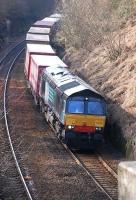
Bill Roberton 11/03/2014
In 1882 the Caledonian Railway built a curve to link together the 1848 former Scottish Central Railway and the 1850 former Stirlingshire Midland Junction Railway such that a train from the Glasgow direction could run to Falkirk Grahamston (and on to Grangemouth or even Edinburgh Princes Street) without reversal at Larbert Junction. The signal box was on the east side of ...
More detailsSee also
Denny Branch (Scottish Central Railway)
Stirlingshire Midland Junction Railway
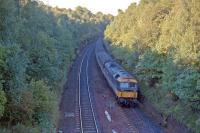
Ewan Crawford //1990
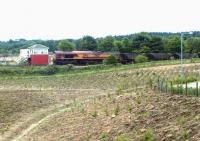
John Furnevel 15/06/2004
At this junction the lines from Greenhill Lower Junction (for Glasgow Queen Street High Level and the south) and Falkirk Grahamston (for Edinburgh Waverley and the south) meet to run north to Larbert, Stirling and Perth. All lines are double track.
...
See also
Stirlingshire Midland Junction Railway
Denny Branch (Scottish Central Railway)
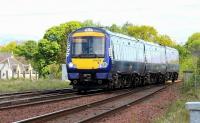
John Furnevel 20/05/2015
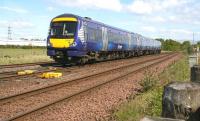
John Furnevel 30/05/2015
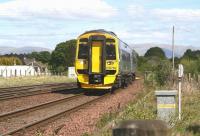
John Furnevel 20/05/2015
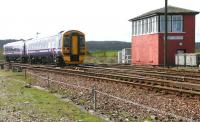
John Furnevel 26/04/2006
This double track 14 arch masonry viaduct crosses the River Carron south of Larbert station and north of Larbert Junction. It is 645 ft long overall and 60 ft high.
...
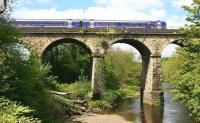
John Furnevel 20/05/2015
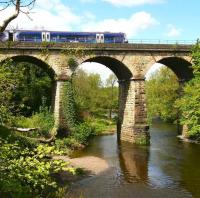
John Furnevel 15/05/2015
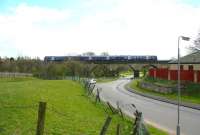
John Furnevel 26/04/2006
This is a two platform station. The present station formerly featured four tracks between the platforms, allowing non stop trains to pass those stopped in the station. There was a bay platform at the south end, east side of the line (from which trains to Grangemouth departed). The original station building still stands on the down (northbound) platform at the north end of the platform.
...
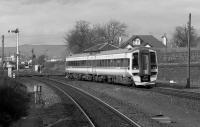
Bill Roberton 20/03/1992
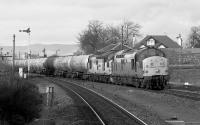
Bill Roberton 20/03/1994
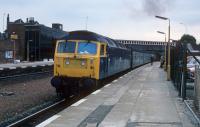
Roger Geach 24/06/1980
This junction was between the Scottish Central Railway of 1848 and its South Alloa Branch (Scottish Central Railway) of 1852. The branch was approached from the south, from Larbert.
...
See also
South Alloa Branch (Scottish Central Railway)
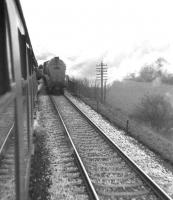
John Robin 30/03/1964
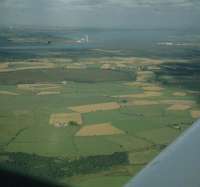
John Robin 23/08/1969
This was a two platform station to the south of sidings which served nearby collieries. It was a very plain station, just two platforms with a footbridge between the platforms. Access to the station was by a footpath which crossed over the mineral line to the Plean collieries by means of a footbridge. The footpath ran to the nearby road.
...
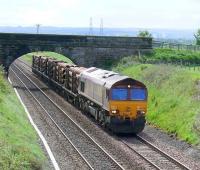
Brian Forbes 25/05/2007
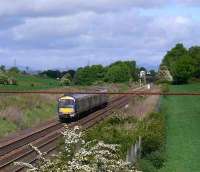
Brian Forbes 25/05/2007
To the north of Plean station the Plean colliery line met the main line. The branch was approached from the north. To the north of this were railway cottages and Plean signal box, a very tall box as it will built to be high enough to see over the road bridge over the railway just to the north. The box was on the west side of the line. Opposite this a tramway ran east to Dunmore Quarry.
...
See also
Plean Colliery Branch (Scottish Central Railway)

Roger Geach 23/03/1995
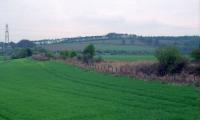
Ewan Crawford //1988
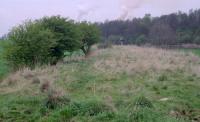
Ewan Crawford //1988
This was a two platform station south of Stirling and nearly a mile east of Bannockburn itself. The main station building was on the southbound platform. It was of a style characteristic of the line. The station was on an embankment.
...
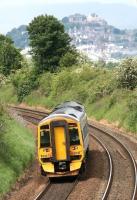
John Furnevel 28/05/2009
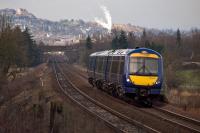
Mark Dufton 05/03/2017
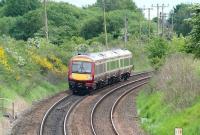
John Furnevel 28/05/2009
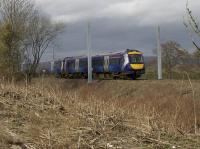
Colin McDonald 17/04/2018
This junction was south of Stirling. The mineral line to Polmaise Nos 1 and 2 Colliery and Polmaise Nos 3 and 4 Colliery ran east from here, access to the branch being from the south.
...
See also
Polmaise Colliery Branch
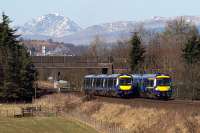
Mark Dufton 25/03/2017
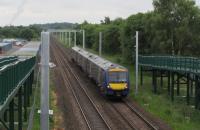
David Panton 12/06/2018
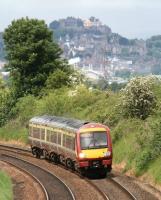
John Furnevel 28/05/2009
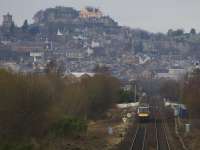
Colin McDonald 30/01/2017
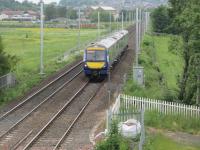
David Panton 12/06/2018
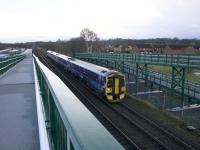
Colin McDonald 31/12/2017
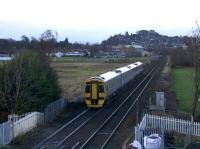
Colin McDonald 31/12/2017
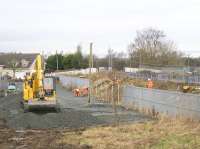
Colin McDonald 30/01/2017
...
More details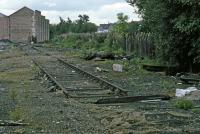
Mark Dufton /08/1985
This signal box was south of the Kerse Road overbridge and controlled the southern approach to Stirling station and Stirling Shed [CR].
...
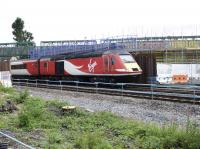
Colin McDonald 26/06/2018
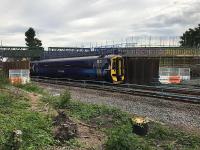
Colin McDonald 26/06/2018
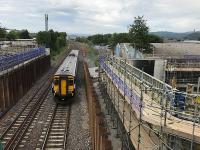
Colin McDonald 26/06/2018
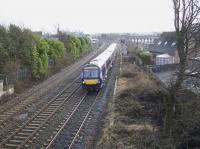
Colin McDonald 30/01/2017
This level crossing was south of Stirling station and Stirling Shed [CR]. It was taken out in 1885, around the same time as the Shore Road level crossings north of the station were taken out (Shore Road Level Crossing [CR] and Shore Road Level Crossing [NB] were taken out in 1887/88).
...
...
More detailsAlso known as Burghmuir or Stirling South. This four road shed was south of Stirling station, on the east side of the line. Access was from both directions.
...
This junction is south of Stirling station it is the location where the main line from Glasgow Queen Street, Edinburgh Waverley and the south meets the branch east to Alloa.
...
See also
Stirling and Dunfermline Railway
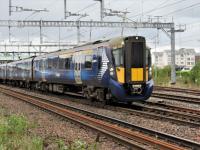
David Panton 26/09/2019
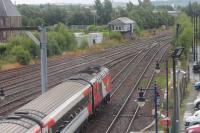
Alastair McLellan 29/07/2017
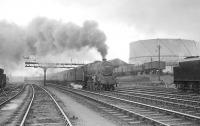
G H Robin collection by courtesy of the Mitchell Library, Glasgow 26/08/1950
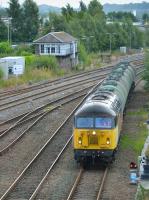
Bill Roberton 23/08/2017
This goods yard, also known as Stirling Central Goods, was on the east side of Stirling station. Approach was from the south, from Stirling Middle Junction. A series of sidings in the east of the site were known as Stirling Weighs. The Caledonian Railway's cattle bank was on the east side of the sidings.
...
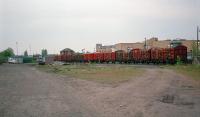
Ewan Crawford //1999
This is a excellent well preserved station with building by James Miller on the main down platform and glass canopies. (This is not the 1848 original building, but is similar in style.) The station was rebuilt around 1912.
...
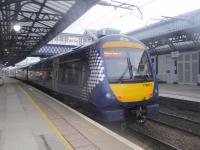
David Bosher 13/03/2019
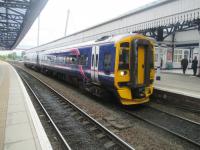
David Bosher 16/05/2016
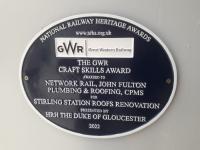
John Yellowlees 11/07/2023
This level crossing was to the north of Stirling station, the Scottish Central Railway and later Caledonian Railway station. It was controlled by a signal box. The box was replaced in 1886. The new box was on the west side of the line and south of the level crossing. Just to the east was the equivalent Shore Road Level Crossing [NB].
...
This junction is to the north of Stirling station. The junction is between lines north to Perth and east to Alloa.
...
See also
Forth and Clyde Junction Railway
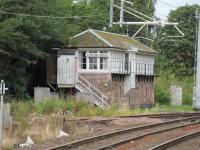
David Panton 21/08/2019
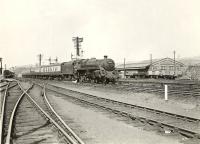
G H Robin collection by courtesy of the Mitchell Library, Glasgow 23/05/1959
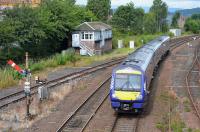
Bill Roberton 25/08/2017
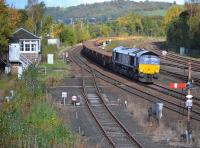
Bill Roberton 22/10/2017
This junction was just north of Stirling station and was formed when the 1848 Scottish Central Railway was met by the 1856 Forth and Clyde Junction Railway.
...
See also
Forth and Clyde Junction Railway
...
More details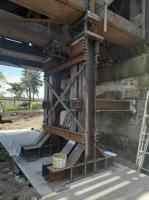
Network Rail /10/2022

Network Rail /10/2022
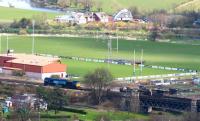
John Furnevel 15/08/2008
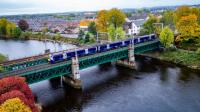
Network Rail /10/2022
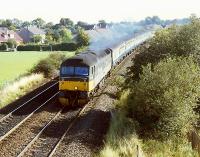
Ewan Crawford //
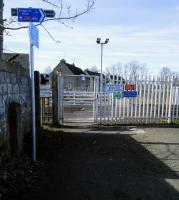
David Panton 20/03/2018
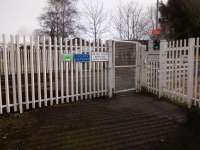
David Panton 24/02/2017
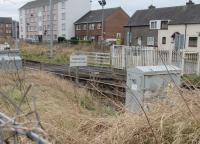
David Panton 05/02/2020
This level crossing is north of Stirling and south of Bridge of Allan. The railway crosses the Cornton Road on an oblique.
...
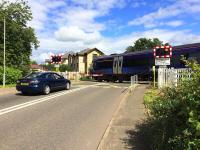
Colin McDonald 01/08/2016
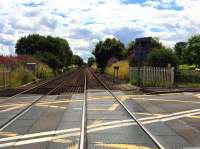
Colin McDonald 01/08/2016
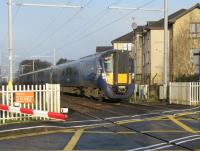
David Panton 27/11/2019
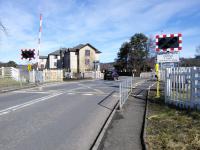
David Panton 20/03/2018
This is a two platform station opened to the south of the original Bridge of Allan [1st] station. It has a car park and waiting shelters.
...
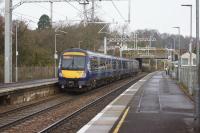
John McIntyre 24/11/2018
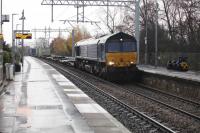
Roger Geach 14/11/2018
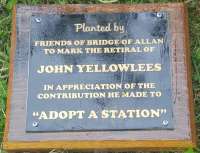
...
John Yellowlees 04/07/2017
This was a two platform station with heavily canopied platforms. Road access was curious being by the up platform and under the overbridge to the south of the station. The platforms were largely, but not entirely north of the overbridge.
...
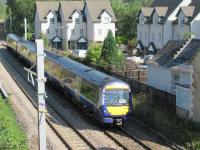
David Panton 05/09/2018
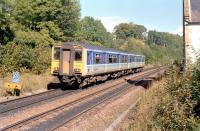
Ewan Crawford //1990
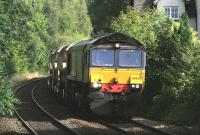
Colin McDonald 01/09/2014
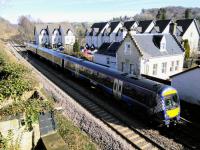
David Panton 20/03/2018
This double track viaduct crosses the Allan Water between Bridge of Allan (to the south) and Kippenross Tunnel (just to the north). The railway follows the Allan Water closely in a tree lined glen between Bridge of Allan and Dunblane.
...
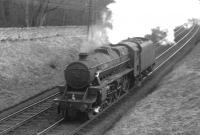
Colin Miller /06/1966
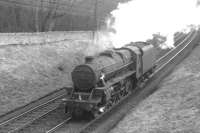
Colin Miller /06/1966
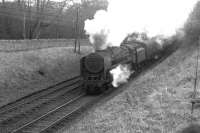
Colin Miller /06/1966
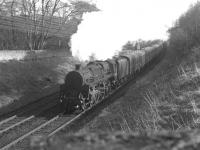
...
Colin Miller /06/1966
This double track tunnel is to the south of Dunblane. The tunnel is 600 yds long.
...
This double track plate girder viaduct crosses the Allan Water south of Dunblane station and north of Kippenross Tunnel and Kippenross House.
...
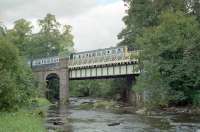
Ewan Crawford //1990
This is a three platform station. Dunblane is both a through station for services running north to Perth and a terminus for local services from Glasgow Queen Street High Level, Edinburgh Waverley and Newcraighall.
...
See also
Dunblane, Doune and Callander Railway
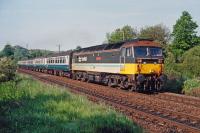
Mark Dufton /07/1990
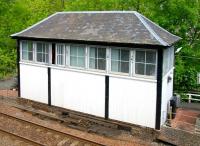
John Furnevel 22/06/2005
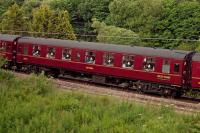
Mark Dufton 03/07/2023
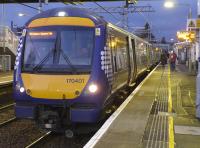
...
Bill Roberton 20/12/2022
This junction was immediately north of Dunblane station. Here the Scottish Central Railway was met by the Dunblane, Doune and Callander Railway. The branch was to be extended by the Callander and Oban Railway to Oban.
...
See also
Dunblane, Doune and Callander Railway
This is a double track skewed four arch viaduct north of Dunblane station and Dunblane Junction. The overall length is around 240 ft.
...
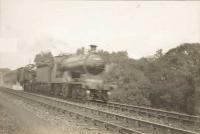
G H Robin collection by courtesy of the Mitchell Library, Glasgow //1934
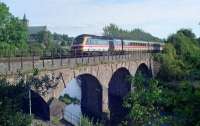
Ewan Crawford //1990
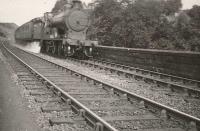
G H Robin collection by courtesy of the Mitchell Library, Glasgow //1934
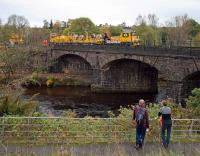
Mark Dufton 20/10/2018
This tunnel was north of Allanwater Viaduct, itself to the north of Dunblane station, and south of Barbush Viaduct.
...
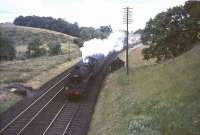
G W Robin 27/07/1965
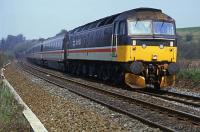
Mark Dufton /04/1987
This double track three span girder viaduct, north of Dunblane station, crosses the Allan Water. It is located between the former Laigh Hill Tunnel (to the south) and Ashfield Viaduct (north).
...
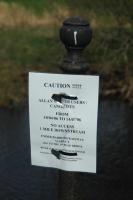
Ewan Crawford 06/05/2006
...
More detailsThis signal box was to the south of Ashfield and the former Ashfield Tunnel. It was on the west side of the line just north of Ashfield Viaduct. The box controlled a trailing crossover.
...
...
More details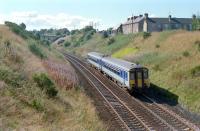
Ewan Crawford //1990
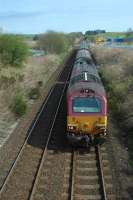
Ewan Crawford 06/05/2006
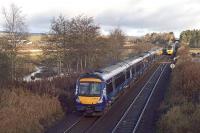
Mark Dufton 18/11/2012
This siding was at Ashfield, north of the former Ashfield Tunnel. It was on the west side of the line and approached from the north. The siding served a loading bank with a crane. Ashfield Mill was to the west.
...
This was a two platform station north of Dunblane. The main station building was on the northbound platform. A similar example exists at Blackford.
...
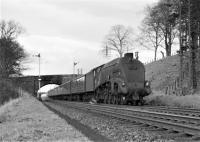
Robin McGregor 15/04/1965
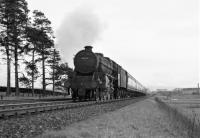
Robin McGregor 15/04/1965
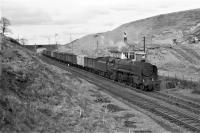
Robin McGregor 15/04/1965
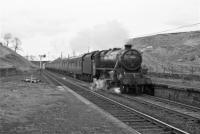
Robin McGregor 15/04/1965
This was a two platform station. The two storey station building remains as a house in what was the northbound platform. It has crow stepped gables typical of stations on the line. The building style was also employed at Auchterarder, Dunblane, Forteviot and numerous other Scottish Central Railway and Caledonian Railway locations.
...
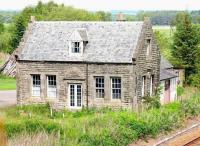
John Furnevel 21/06/2005
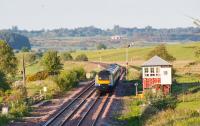
Ewan Crawford 02/06/2023
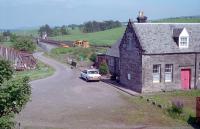
Ewan Crawford 12/06/1989
This was a curling platform halt alongside Carsebreck Loch, the Royal Caledonian Curling Pond. It has been variously known as Nethertown, Curling Society's Platform, Curling Pond Halt, Royal Curling Club Platform,Royal Curling Club Station (as indicated on OS maps) and Carsbreck.
...
This was a two platform station with a goods yard at the west end, south side of the line. The station building also survives on the former westbound platform, its extension to the east removed. From the platform side, this resembled a house with dormer windows (removed since closure of the station). A similar building exists at the former Kinbuck station. A small timber waiting room was on ...
More details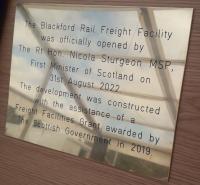
John Yellowlees 31/08/2022
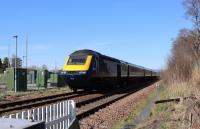
Mark Bartlett 22/04/2022
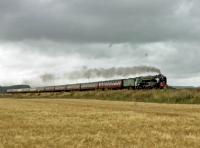
John Robin 21/08/2021
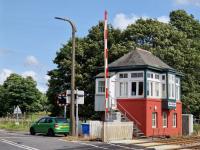
David Prescott 21/08/2023
This was a four platform station with two platforms on the main line and two on the branch to Crieff [1st]. It ws replaced by the present Gleneagles station. The main station building was on the northbound main line platform and had canopies. there was a building on the southbound main line platform and small shelter on the northbound branch platform.
...
See also
Crieff Junction Railway
Gleneagles Station and Gleneagles Hotel Branch (Caledonian Railway)
This is a two platform station, and was built as a three platform station. The station has canopied platforms and station buildings similar to those which existed at Eglinton Street and Carstairs stations. It is a fine example of a superior Caledonian Railway station. The design was by James Miller. Not only did the station serve the surrounding area but also, from 1924, the ...
More detailsSee also
Gleneagles Station and Gleneagles Hotel Branch (Caledonian Railway)
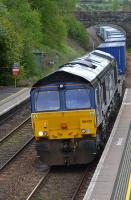
...
Bill Roberton 07/05/2019
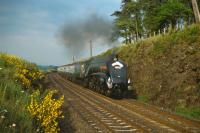
Robin McGregor 07/06/1975
The summit of the line between Stirling and Perth was just south of Gleneagles station at 422 ft.
...
This was a two platform station. The station building was a two storey with crow stopped gables on the down platform, like the one still extant at Greenloaning.
...
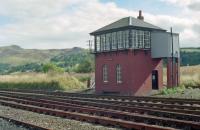
Ewan Crawford //1990
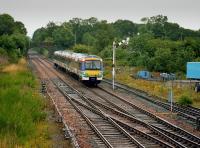
...
Bill Roberton //2003
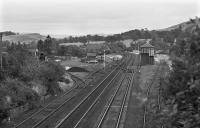
...
Bill Roberton //1990
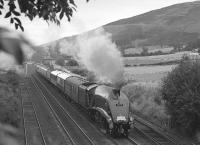
Bill Roberton //1990
Array
More details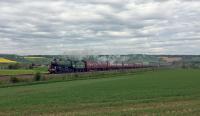
John Robin 13/05/2019
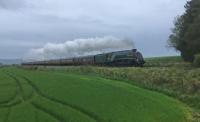
John Robin 01/05/2019
This was a two platform station. It was somewhat distant from the town of Dunning, more than a mile and a half distant.
...
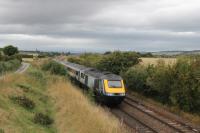
Mark Bartlett 23/09/2021
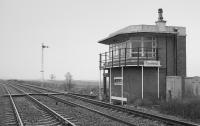
...
Bill Roberton //1993
This was a two platform station. The station building, two storeys with crow stepped gables, remains as a house on the former down platform as does a railwayman's cottage by the level crossing. The goods yard was to the south, on the west (down) side of the line, with a refuge siding on the up side.
...
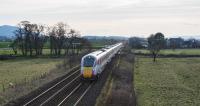
Ewan Crawford 03/04/2023
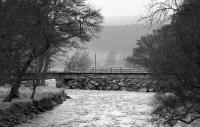
...
Bill Roberton /01/1993
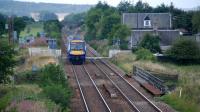
Ewan Crawford 19/08/2013

Bill Roberton /01/1993
...
More detailsThis station was north of the village of Forgandenny and west of Forgandenny Viaduct.
...
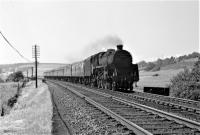
...
Robin McGregor 17/07/1965
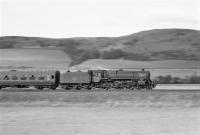
Robin McGregor 29/08/1964
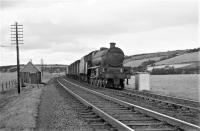
Robin McGregor 29/08/1964
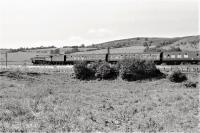
Robin McGregor 17/07/1965
This double track girder viaduct crosses the River Earn. The viaduct has two portions. There are four bowstring girders to the east which rest on large columnar piers, with circular shaped bracing. This portion is similar to Sandilands Viaduct, except only one 'circle' high, whereas Sandilands was four. To the west are 12 regular girders resting on stone piers and, between the two portions, ...
More details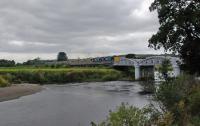
Ewan Crawford 19/08/2013
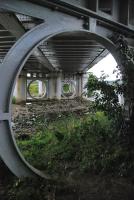
Ewan Crawford 19/08/2013
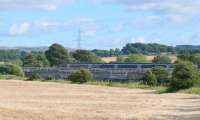
Brian Forbes 31/08/2007
This junction is south of Perth, immediately south of the Moncrieffe Tunnel. Here the lines from Stirling and Ladybank meet and continue north to Perth.
...
See also
Strathearn Junction Railway (Edinburgh and Northern Railway)
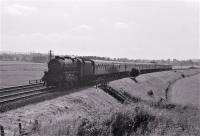
Robin McGregor 17/07/1965
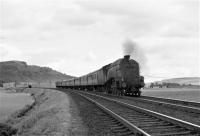
Robin McGregor 29/08/1964
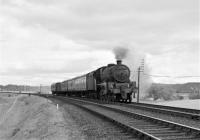
Robin McGregor 29/08/1964
This double track 1,220 yard tunnel passes under the Friarton Hill, south of Perth, on a curve. To the immediate south is Hilton Junction and to the north was Friarton Junction. It is the fifth longest railway tunnel in Scotland.
...
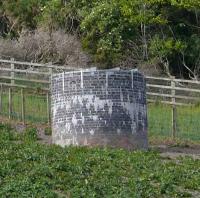
Brian Forbes 25/05/2007
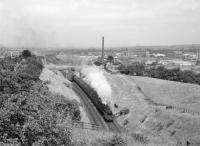
Robin McGregor 17/07/1965
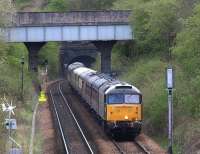
Brian Forbes 11/04/2009
This junction was in the south of Perth, just north of Moncrieffe Tunnel. The branch for Perth Harbour branches off from the main line here, running north east to a headshunt by the River Tay.
...
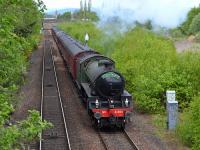
Bill Roberton 13/05/2019
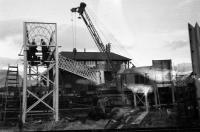
Aitken Scott //
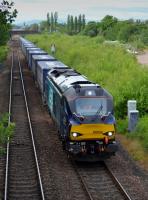
...
Bill Roberton 23/06/2018
This goods yard this was chiefly a marshalling yard on the east side of the line between Friarton Junction, to the south, and the Edinburgh Road bridge to the north. There were no loading banks, cranes or goods sheds, but the site was classified as having public sidings after 1962.
...
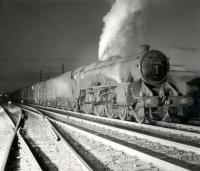
Ken Browne Collection //
Also known as Friarton. The shed was originally single ended approached from the north. It was modified to become a double ended and approached from both north and south. It was replaced with a new building to the south in 1938 and the old shed demolished. The new shed was approached from the north.
...
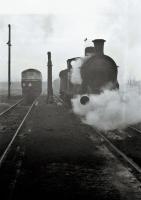
David Murray-Smith /12/1961
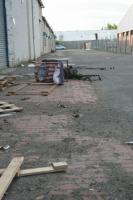
Gary Straiton 26/05/2017
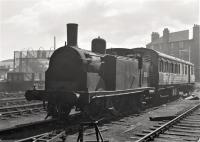
Robin McGregor 29/08/1964
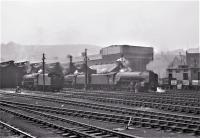
Robin McGregor 29/07/1963
This junction is south of Perth station and north of the Edinburgh Road bridge. It is, today, where the up and down Dundee lines begin.
...
See also
Perth General Enlargement (Perth Station Committee (Caledonian Railway, North British Railway and Highland Railway))
Dundee and Perth Railway
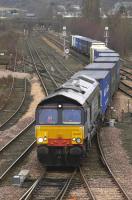
...
Bill Roberton //2005

Bill Roberton 25/05/1974
This junction was south of Perth General station. The box here was replaced by St Leonards Bridge Junction Signal Box in 1887 during the reconstruction of Perth station.
...
See also
Dundee and Perth Railway
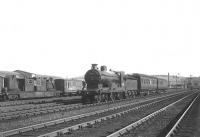
G H Robin collection by courtesy of the Mitchell Library, Glasgow 16/04/1955
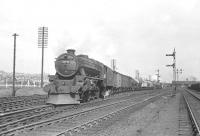
See
G H Robin collection by courtesy of the Mitchell Library, Glasgow 16/04/1955
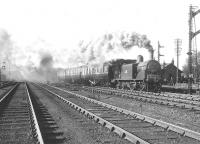
See
G H Robin collection by courtesy of the Mitchell Library, Glasgow 16/04/1955
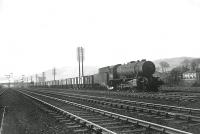
See query ...
G H Robin collection by courtesy of the Mitchell Library, Glasgow 16/04/1955
The original shed here was an Edinburgh, Perth and Dundee Railway building, a two road shed approached from the north, a later to the south of its replacement. It was replaced in 1885 with a new building.
...
See also
Perth General Enlargement (Perth Station Committee (Caledonian Railway, North British Railway and Highland Railway))
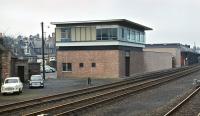
Bill Jamieson 03/03/1971
This was a large signal box to the south of Perth station and the St Leonard's overbridge. The box controlled quite a number of lines. Perth station had a ticket platform, St Leonards Bridge Ticket Platform, 300 yards to the south of the bridge for northbound trains.
...
See also
Dundee and Perth Railway
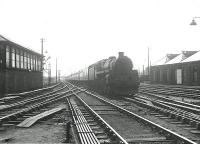
G H Robin collection by courtesy of the Mitchell Library, Glasgow 16/04/1955
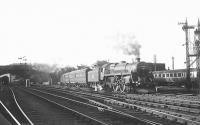
G H Robin collection by courtesy of the Mitchell Library, Glasgow 16/04/1955
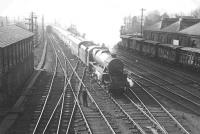
G H Robin collection by courtesy of the Mitchell Library, Glasgow 16/04/1955
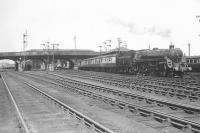
G H Robin collection by courtesy of the Mitchell Library, Glasgow 16/04/1955
...
More detailsThis is a superb major station with a tudor styled building by William Tite and large glazed trainshed situated on the western edge of the Perth town centre. To the south lines from Glasgow Queen Street High Level and Edinburgh Waverley meet at Hilton Junction and in the station lines north to Inverness and north east to Dundee and Aberdeen divide. Today it is an eight ...
More detailsSee also
Scottish Midland Junction Railway
Dundee and Perth Railway
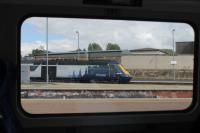
Mark Bartlett 02/08/2022
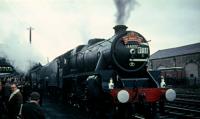
Colin Kirkwood 25/03/1967
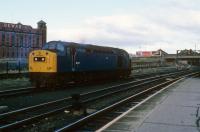
Roger Geach 29/03/1982

...
Bill Roberton 15/10/1983
Books










